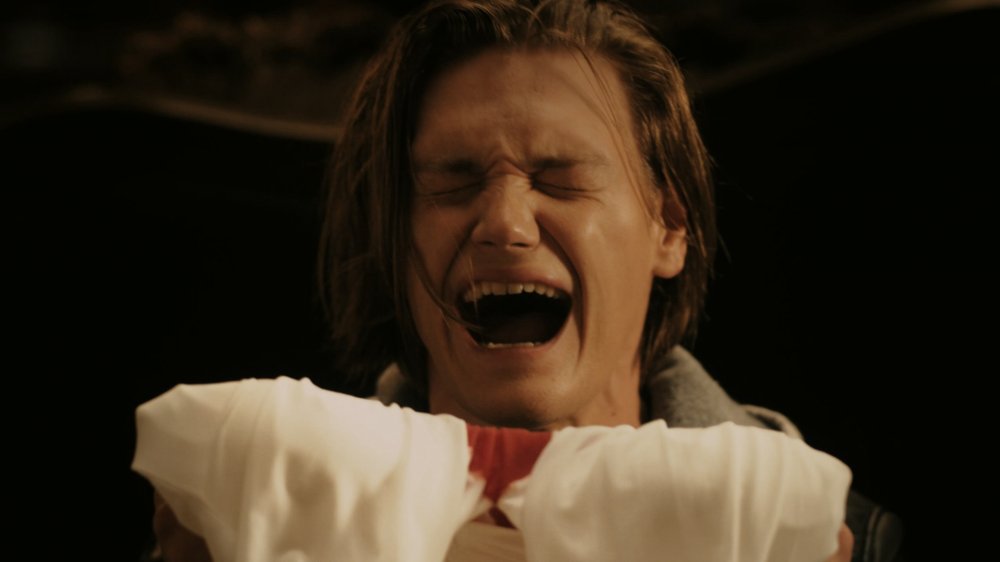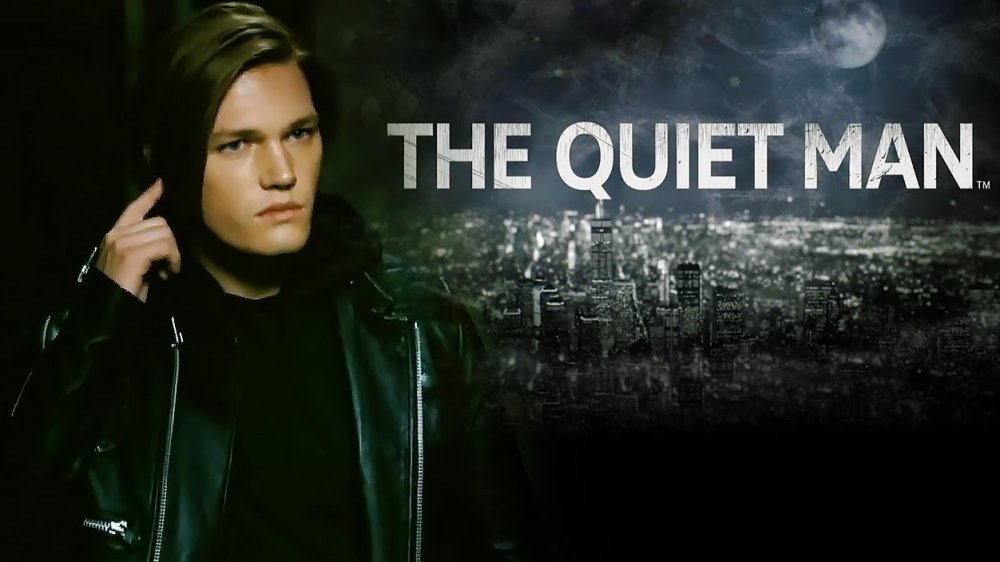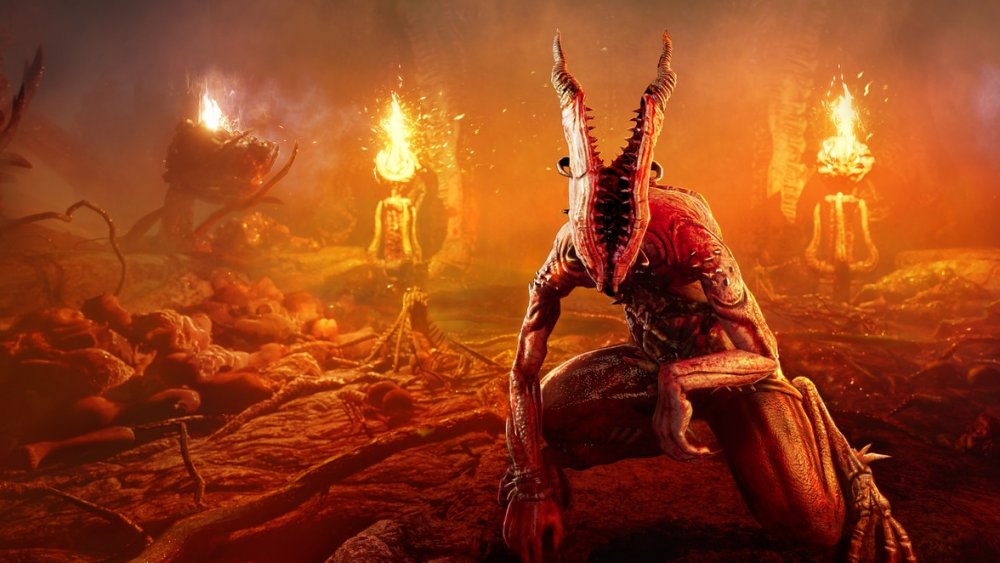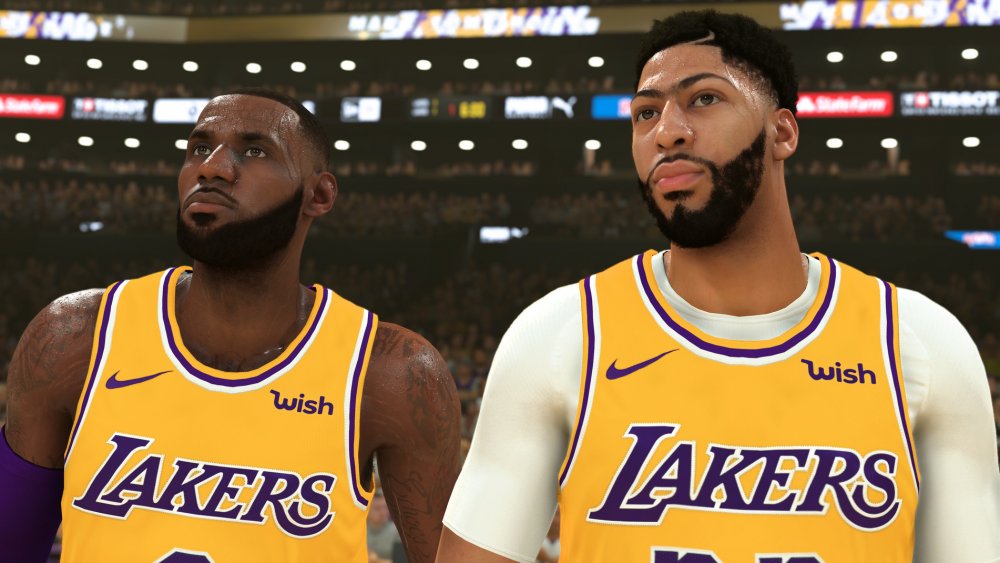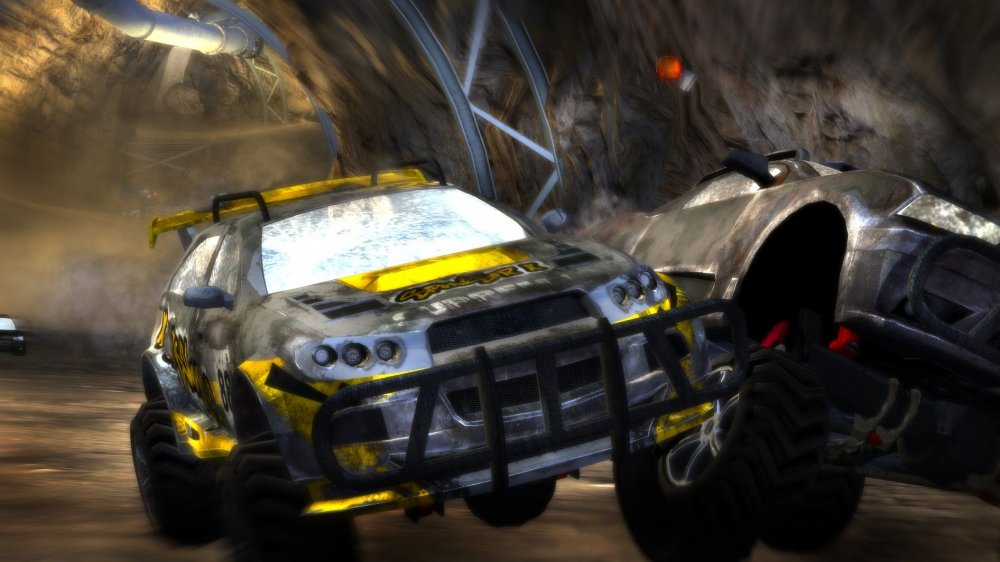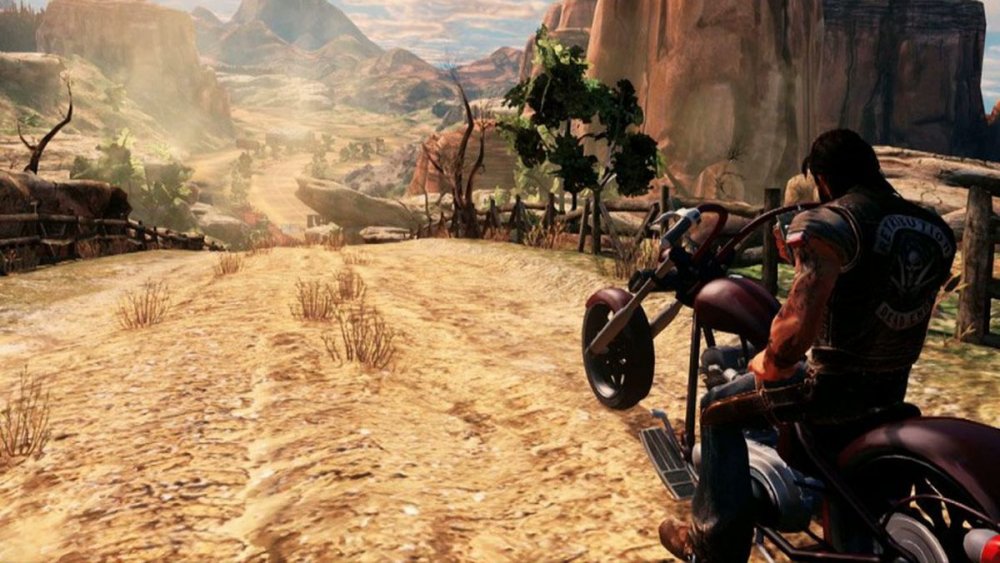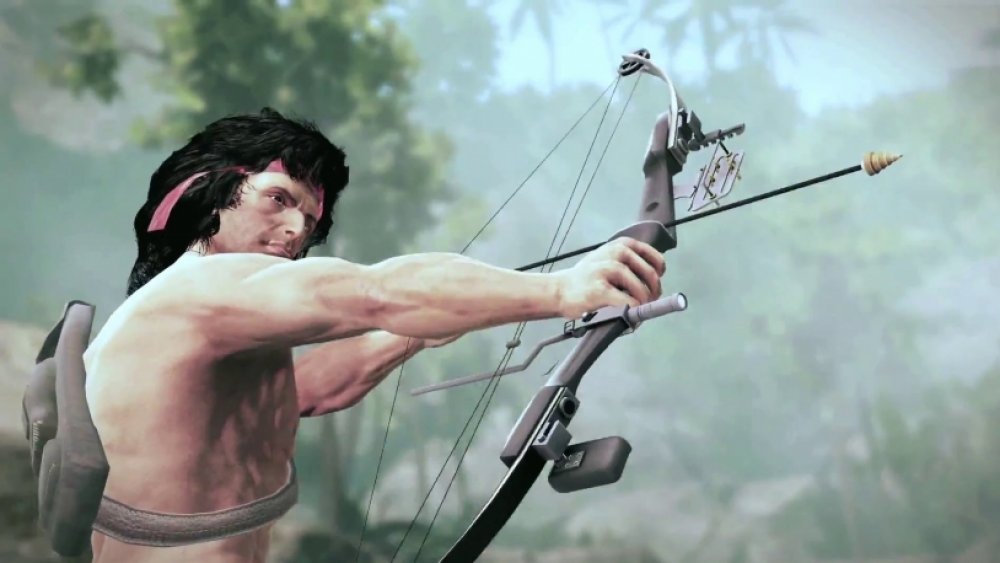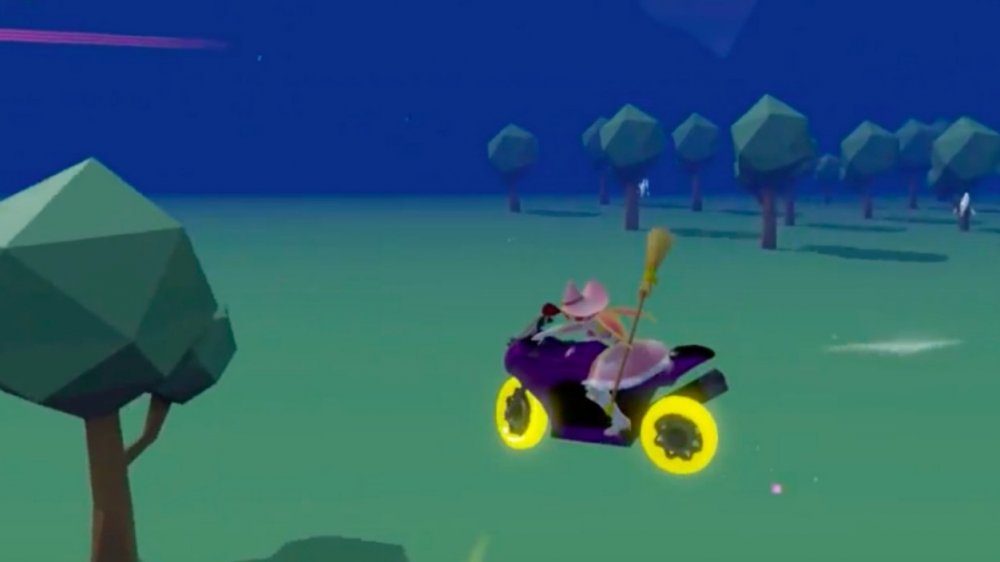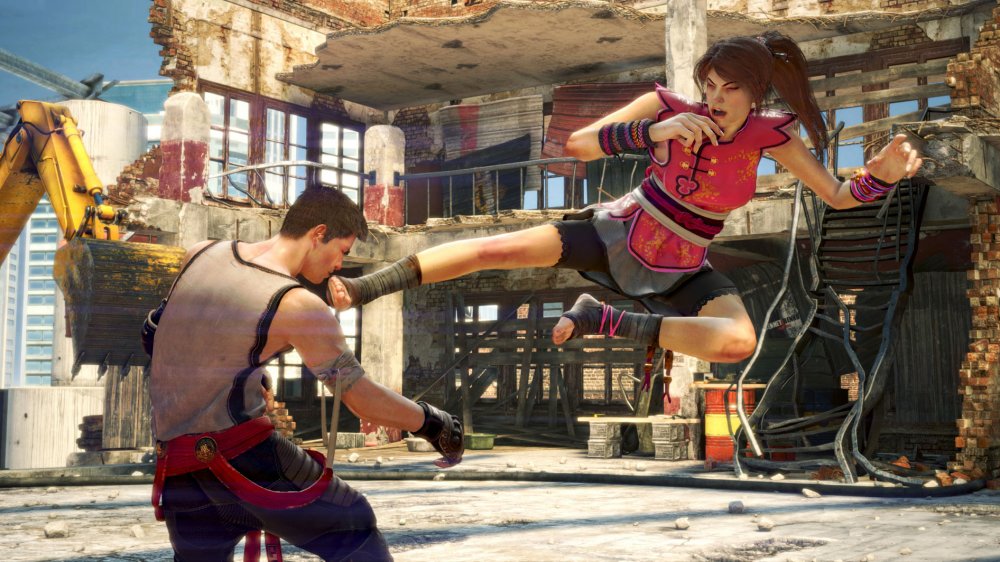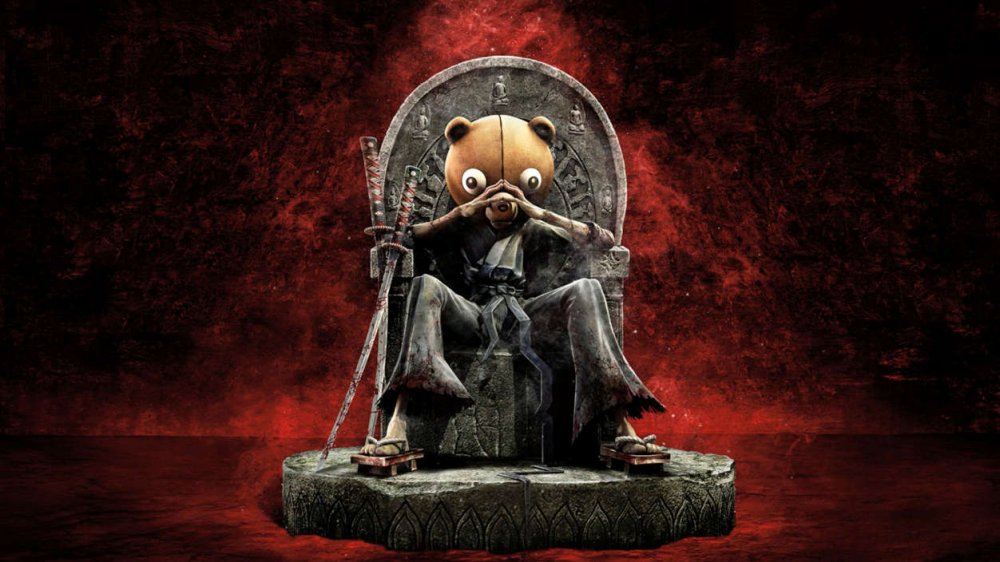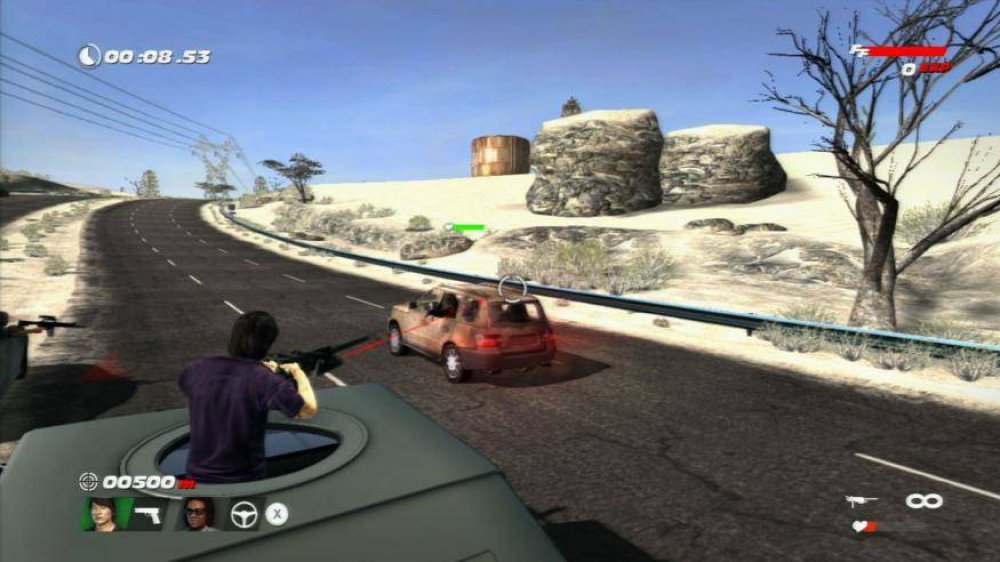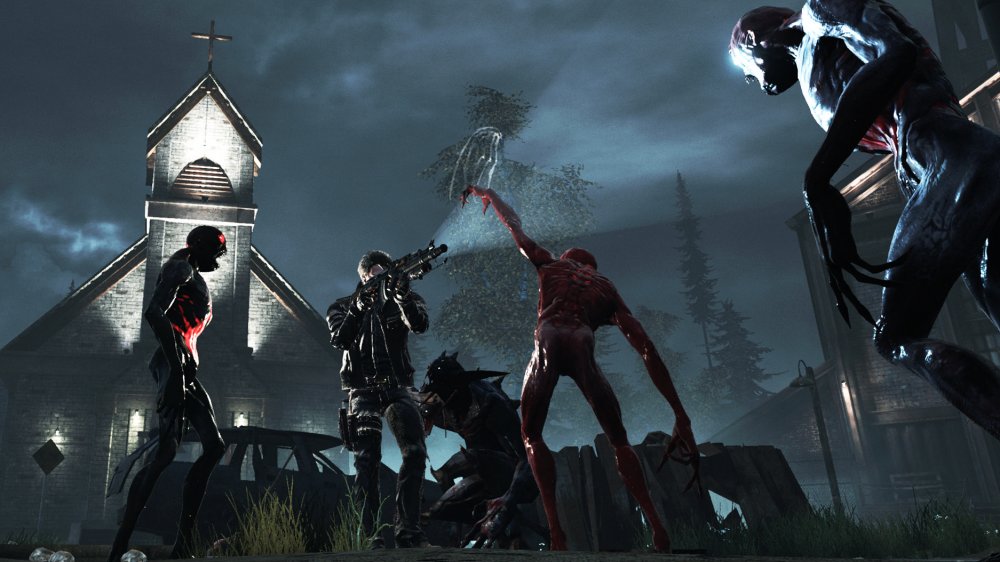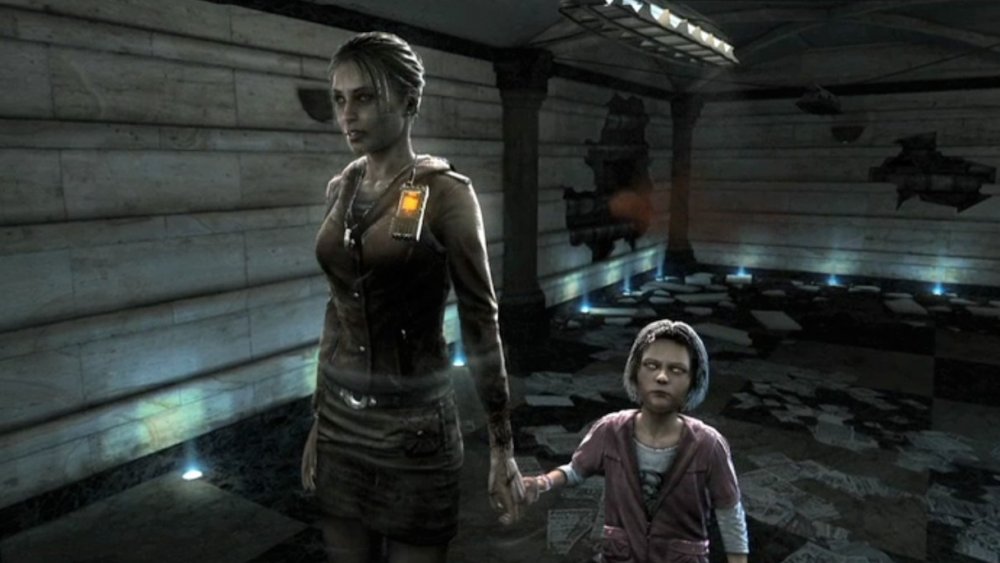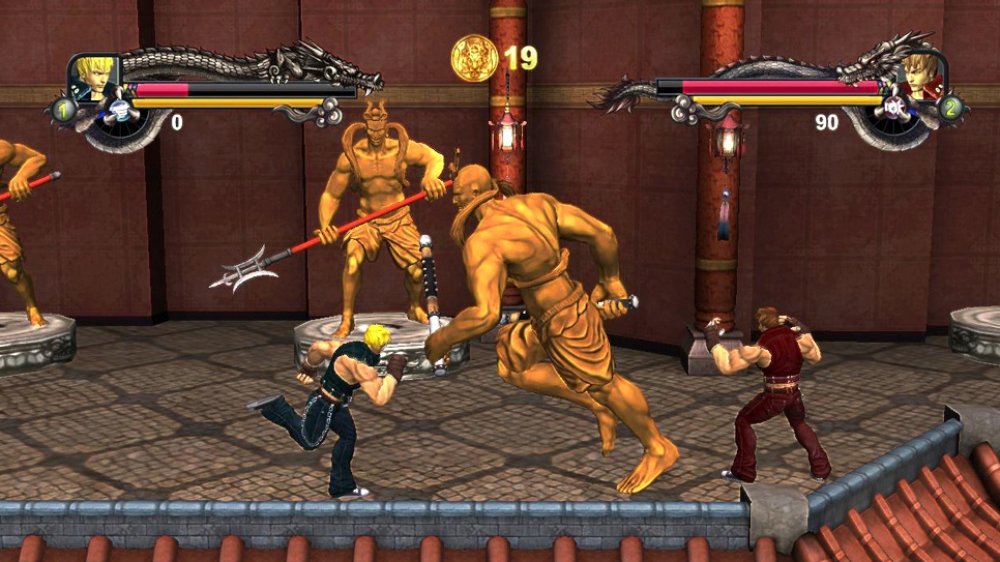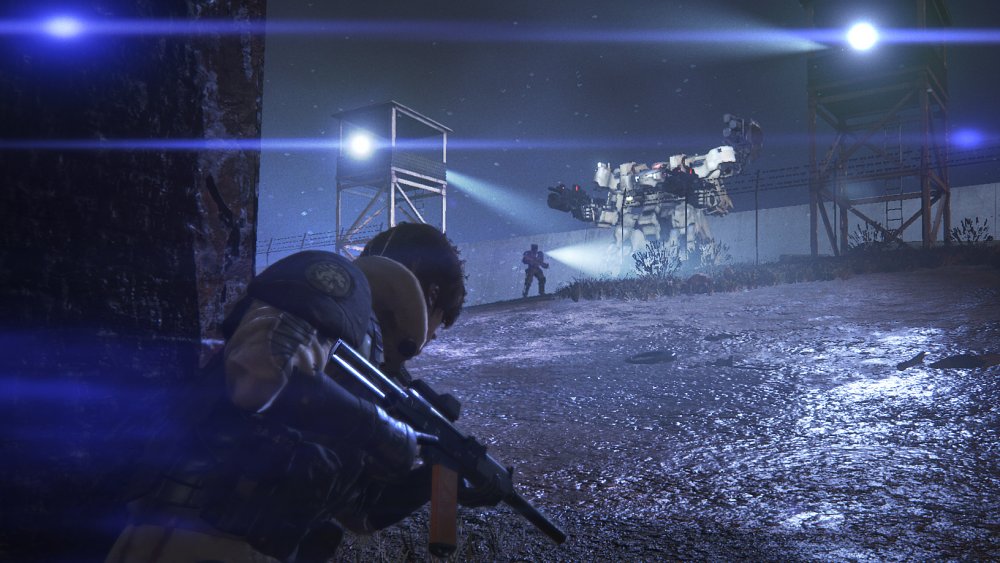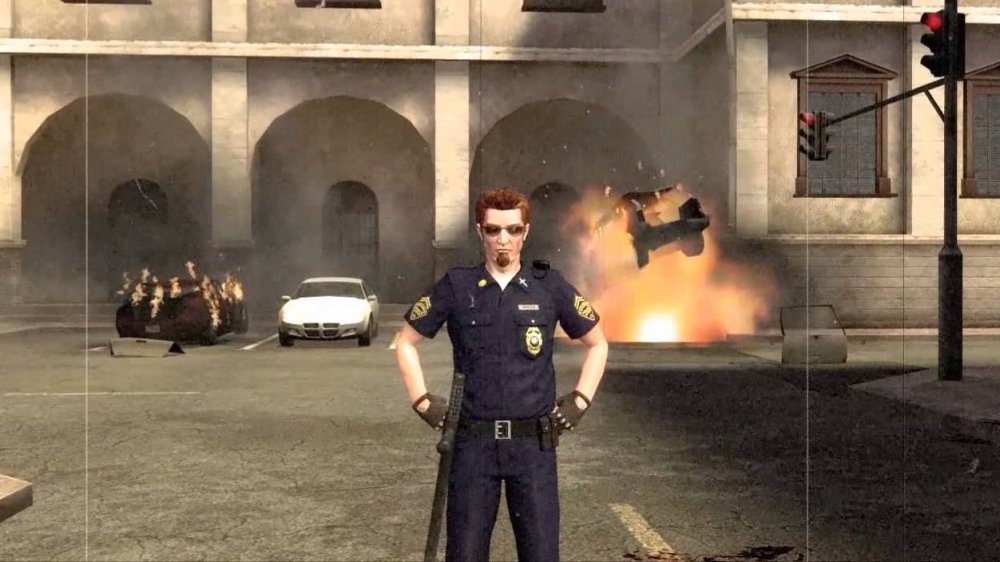The Worst Rated Games Of The Last Decade
The past decade has brought us many wonderful games, with titles like Red Dead Redemption 2 and The Last of Us raising the bar for interactive entertainment. Still, not every title released in the last ten years has been a winner. For every AAA home run there were plenty of projects that missed the mark. Even a game supported by lofty goals and good intentions can fall perilously short of its creators' vision, leaving the industry to figure out how it all went wrong. That's the nature of the business, no matter which decade you're in.
With that in mind, here's a look back at some of the games that were universally disliked during the last ten years. Some titles were simply cases of wasted potential while others were really as bad as their reputations suggest. From the offensively violent to the poorly-conceived, these are the worst rated games of the last decade.
The Quiet Man
Released in 2018, The Quiet Man is baffling from every angle. It's hard to understand how anyone involved believed they were making a good product. Though an action game with a deaf protagonist is an interesting concept, developer Human Head Studios portrays this by showing you a series of muted cutscenes. Tony Polanco of Geek.com called The Quiet Man "the most disappointing game of 2018." The title lacks a tutorial and you "will have to fumble with the controls to figure them out" through a series of repetitive fight scenes. In an even weirder design choice, you're forced to finish the game to unlock a second playthrough that includes sound and dialogue.
GamesRadar+ took the game to task for its nonsensical plot, comparing the flawed storytelling to Tommy Wiseau's The Room, considered one of the worst films of all time. At least The Room is entertaining. The Quiet Man is just a misguided disaster.
Agony
Agony released in 2018 following a highly successful Kickstarter campaign. The game, which followed a damned soul's quest to escape from Hell, received quite a bit of attention as an Adults Only title and for its original intent to release a separate "unedited" version (which was eventually canceled). When it released, Agony received almost universally negative reviews. Much of the condemnation centered on the game's perceived try-hard nature, with the disgusting visuals and edgy narrative feeling like they took precedence over the actual gameplay.
Vice criticized Agony for its treatment of female characters, mentioning all the "women who strut around the world without clothes, whose screams of 'pull it out' become environmental texture, and who the game constantly, specifically goes out of its way to violently degrade." Despite the overwhelming censure, a Nintendo Switch port of Agony released in October 2019, just in case anyone wants to go to portable hell.
NBA 2K20
NBA 2K20 divided critics and fans. On Metacritic, the PC release of NBA 2K20 averages 74/100 with critics, but has a staggeringly low 0.4/10 score from user-submitted reviews. The consensus among fans seems to be that they feel ignored. Reviewers on Steam felt robbed of content, criticizing the game's many server connectivity issues and the heavy reliance on microtransactions, which made many players feel like the game was "pay to win."
Others felt the title failed to evolve from previous installments in the franchise. "Reskin of last years game basically, and horrible microtransaction enforced modes, " wrote one user. "Can't enjoy the join single player without spending above the already high cost of game. Best NBA product on the market unfortunately its still really horrible... just a monopoly." It seems as a standalone game it did fine with critics. Fans who look forward to the newest installment of this series each year, however, found NBA 2K20 wanting.
FlatOut 3: Chaos and Destruction
The FlatOut series is a fun mix of traditional racing game mechanics and vehicular combat with an emphasis on "realistic" damage. 2011's FlatOut 3: Chaos & Destruction was the first game in the franchise developed without the input of Bugbear Entertainment, the original developer, and it seems something special was lost in that transition.
Reviews centered on the game's awful opponent A.I. and buggy tracks, while even the solid concepts carried over from the previous entries in the series felt botched, including the trademark damage system. "Playing against the computer in FlatOut 3 is like playing online against an entire field of griefers all fixated on ruining the race for each other ... There's no consistency with how the game handles damage received and dealt," wrote IGN's Luke Reilly. Six years would pass before FlatOut 4: Total Insanity finally sputtered its way to the starting line.
Ride to Hell: Retribution
When first announced in 2008, Ride to Hell seemed poised to become the ideal fusion of Grand Theft Auto-style mayhem and Sons of Anarchy aesthetics keep in mind this was before Rockstar did that themselves with Grand Theft Auto 4: The Lost and the Damned). When Ride to Hell: Retribution finally dropped in 2013, critics blasted the game for its ugly graphics, sub-par brawling mechanics, and surprisingly terrible driving controls.
The long gap between the announcement and the release, along with its numerous flaws, all point toward a difficult development cycle. You can see this in the number of features dropped from the game over the course of its production. Ride to Hell originally included hundreds of licensed songs and a much more open world for the characters to traverse. "Everything about its lifespan and publishing suggests Ride to Hell's owners just wanted to salvage whatever work had been done and get on with life," concluded Kotaku's Owen Good.
Rambo: The Video Game
Movie tie-in games are usually hit or miss when it comes to quality, but Sylvester Stallone is one actor who seems to consistently strike out when it comes to video games adaptations of his films. 1995's Judge Dredd was about as uninteresting as the movie that spawned it, while 2002's Rocky was a glitchy mess. It should come as no surprise that 2014's Rambo: The Video Game was less than stellar, but it's still a bummer considering how perfectly suited some of the Rambo flicks were for video games.
Rambo: The Video Game arrived six years after the previous Rambo film and five years before the next, making it weird timing for an adaptation. Whatever motivated its development and release, the game debuted as a barely-functioning mess that wasted its lead character and premise. "Rambo: The Video Game just disappoints, over and over," Robert Workman of Shacknews wrote in his review. "Go watch the movies instead."
Vroom in the Night Sky
The fact that 2017's Vroom in the Night Sky was a launch title for the Nintendo Switch is genuinely haunting. The cutesy magical racing game feels half-baked in every regard. It's not at all the kind of release that would inspire confidence in a new console. Though it has many flaws, the biggest strike against Vroom in the Sky is its lack of content. There's barely enough there to justify the purchase. You can complete the game within 1-2 hours, but even those brief races feel inconsequential and buggy. The graphics are low quality and collecting Stardust to buy new bikes for your character feels pointless since the controls are laggy and imprecise no matter which vehicle you're using.
Even a later patch seemed to focus on all of the wrong elements. Developer Poisoft updated the poor Japanese-to-English translation of the script — which featured such incredible lines as "Now I am the wind!" — to clear up a bit of the dialogue. Unfortunately, the patch only made the game worse, filling the text with typos and grammatical errors.
Fighter Within
This 2013 launch title for the Xbox One intended to take full advantage of the Kinect's abilities, offering a chance for gamers to feel like they're in a real fight. Unfortunately, as pointed out by Polygon's Danielle Riendeau, Fighter Within failed to properly read player movements, resulting in a game plagued by "rampant technical issues and iffy writing." Most of the game's reviews seemed to concur with this sentiment, with critics and fans alike observing the game had a solid premise marred by bugs and unresponsive controls.
The real bummer is that this was the second game in the series to suffer the same issues, coming after the equally-reviled Xbox 360 Kinect title Fighters Uncaged. "Yes, the motion tracking isn't as bad as in Fighters Uncaged, and yes, at least there's two-player combat this time," wrote Mark Walton of GameSpot. "But that's pretty much like applying lipstick to an ugly pig."
Afro Samurai 2: Revenge of Kuma
The first video game adaptation of the Afro Samurai anime was a middling affair. At the very least, much like the show that inspired it, the game featured a fantastic soundtrack from RZA. Sadly, the 2015 follow-up Afro Samurai 2: Revenge of Kuma, planned as the first episode of three in a new story, was significantly worse.
Kotaku's Mike Fahey found himself unable to finish the game, instead spending the bulk of his review detailing the many technical, including unresponsive controls and constant freezing. Revenge of Kuma was a critical disaster and the developers at Versus Evil pulled the game from sale, declaring it a failure and announcing that the remaining episodes would not be made. "We're returning all the money ... we're putting out an apology saying 'sorry about this," said Versus Evil general manager Steve Escalante. Not even a solid RZA soundtrack could salvage this one.
Fast & Furious: Showdown
Vin Diesel once starred in The Pacifier, a film where he plays a Navy SEAL tasked with taking care of five children. The movie was terrible, so the fact that Vin Diesel declined an appearance or use of his likeness in the 2013 video game adaptation of one of his biggest franchises should give you pause.
As a concept, a game based on remixed set pieces from the Fast & Furious movies has a lot of potential. Unfortunately, Fast & Furious: Showdown is such a mess even fans of the films hated it, citing awful controls and missions that would glitch to the point of being impossible to complete. Worst of all, the game squandered the potential for fun inherent in the source material. "Fast & Furious: Showdown fails on practically every level to capture any of its cinematic brethren's frantic energy and enthusiasm for lovely destruction," asserted IGN's Marty Sliva.
Alone in the Dark: Illumination
Not only is 2015's Alone in the Dark: Illumination the worst entry in the Alone in the Dark franchise, but it's one of the worst-reviewed horror games in recent memory. The title turned a series mostly known for solitary exploration and survival into a co-op action game with a nonsensical plot, poor controls, and glitchy graphics. Worst of all? It wasn't scary. Honest Gamers' review described Illumination as "an almost perfect cavalcade of bad game design ... it so desperately wants to be a horror game, but exhibits absolutely no understanding of how horror should work."
There was even some speculation that Atari may have purposefully released the game at the same time as 2015's E3 conference in a bid to make sure it flew under the radar of most gaming journalists. THQ Nordic purchased the rights to Alone in the Dark in 2018, so we may be in for an all-new nightmare in the near future. Here's hoping it's a good one.
Amy
Amy, a survival-horror game from 2012, had an interesting premise: an autistic girl with superpowers must battle zombies and evade a mysterious organization tracking her and her guardian. Unfortunately, the final product squandered that premise. IGN called Amy "a supremely muddled mess of controller-throwing frustration and piss-poor game design choices," citing awful controls, broken puzzle-solving, and embarrassingly stiff voice acting as the game's biggest flaws.
The game's save points were spaced so far apart players would have to repeat lengthy sections over and over. This was a particular point of contention in GamesRadar+'s review: "While ducking into a closet to avoid a giant monster might be a tense moment the first time you experience it, when you're forced to sit through that same moment countless times it becomes mind-numbing and tedious." To the credit of the game's developers at VectorCell, they did attempt to rectify a few of these problems. Amy received a major update that added new save points to the game, as well as a few other quality of life changes, but the base game remains a buggy and muddled experience.
Double Dragon 2: Wander of the Dragons
Beyond the nonsensical title, Double Dragon 2: Wander of the Dragons was a baffling mess reviled by critics. The game was announced in 2011 via an awful-looking trailer and didn't see the light of day until 2013. "Apparently Wander Of The Dragons has been in development for three years. We can only assume that the majority of that time was spent staring wistfully out of the window instead of getting any work done," wrote Metro. Indeed, it feels like almost zero thought went into the project.
The remake of the classic beat 'em up sequel got everything wrong the previous year's Double Dragon Neon had gotten so right. Wander of the Dragons' difficulty level spiked unforgivably, the art design was unpleasant to look at, and the controls were sluggish, making even the simplest combos nearly impossible to pull off. Even the game's original listing on Xbox Live seemed to have been written in a fevered panic, containing such memorable lines as: "The story line takes same as original game story."
Left Alive
Left Alive disappointed in so many ways. The spin-off from the Front Mission strategy franchise could have introduced the base series to a wider western audience had it not been such a sub-par game. It seemed to have a lot going for it: mechs, stealth gameplay, and character designs from Metal Gear Solid's Yoji Shinkawa.
After viewing a Left Alive demo, PC Gamer's David O'Keefe applauded the intricate moral choices the player confronts throughout the game, but he was unimpressed by the gameplay itself. There was hope that the final product would be more impressive, but those hopes were dashed when Left Alive actually released. During its initial launch in Japan, players couldn't stream the game. This could only delay the poor reviews for so long, and critics weren't kind. At least most reviewers agreed the game was ambitious, even if it fell short. "Left Alive tries to be so, so many things ... And yet it fails on every level," wrote IGN's DM Schmeyer.
Postal 3
You know something has gone terribly wrong when the creators of a franchise tell their fans not to buy the latest installment. That's what happened with 2011's Postal 3, which had its development handed over to another studio, much to the regret of Running With Scissors, the folks behind the first two games. Postal 3 was met with savage reviews, many of which were re-posted by Running With Scissors on their official blog. They also made a point to remove Postal 3 from sale (although the game remains available on Steam).
Was it really that bad? Well, yes, to put it mildly. PC Gamer's review slammed the game for its complete lack of subtlety, with its many "jokes" relying on pointless shock humor (which is saying something considering how controversial the first two were). Disgusting content aside, the game was nearly unplayable. It constantly crashed and many of the missions lacked checkpoints, supposedly the result of the open world concept scrapped during development. All in all, it was an embarrassment to a franchise that didn't exactly have lofty goals to begin with.

